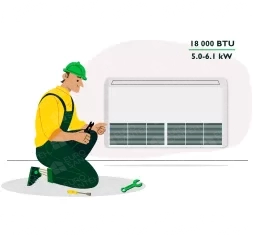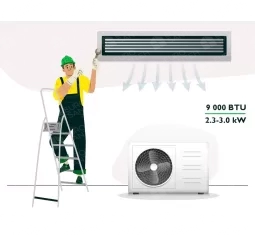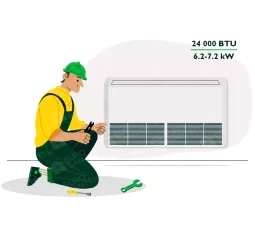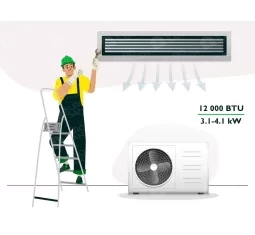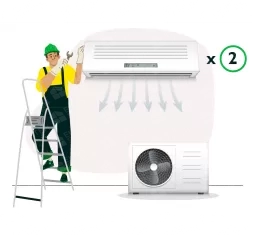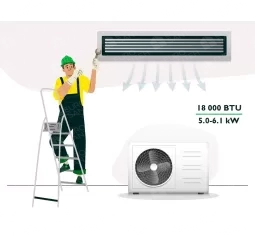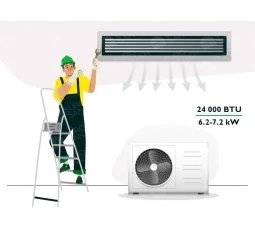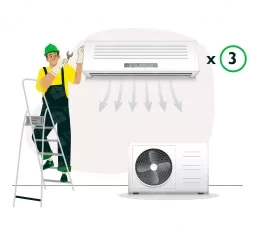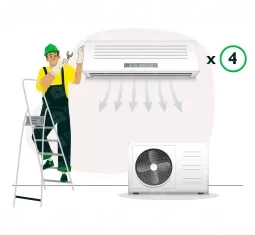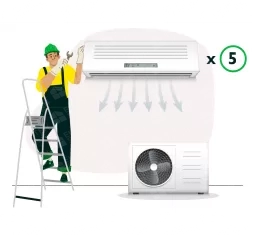Installation of inverter air conditioners in Chisinau
Inverter air conditioners have revolutionized the way we cool and heat our spaces by offering greater efficiency, quieter operation, and precise temperature control. These systems adjust compressor speed to meet the cooling or heating needs more efficiently than conventional models, resulting in significant energy savings and enhanced comfort. Installing inverter air conditioners requires careful planning, precise execution, and adherence to manufacturer guidelines for optimal performance and longevity.
Understanding Inverter Air Conditioners
Inverter technology allows air conditioners to vary the speed of their compressors, adjusting cooling or heating output based on the room's requirements. Unlike conventional units that turn on and off to maintain temperature, inverters operate continuously at varying speeds, which reduces energy consumption and maintains a more stable indoor environment.
Advantages of Inverter Air Conditioners
Energy Efficiency: Inverter air conditioners are renowned for their energy efficiency. By adjusting compressor speed rather than cycling on and off, they consume less power, resulting in lower electricity bills and reduced environmental impact.
Quiet Operation: Inverters operate more quietly compared to traditional air conditioners. The gradual ramp-up and down of compressor speeds minimize noise levels, enhancing comfort, especially in noise-sensitive environments.
Faster Cooling and Heating: Inverter technology allows air conditioners to reach desired temperatures faster by maintaining a consistent output. This quick response to temperature changes ensures rapid cooling or heating when needed.
Longer Lifespan: The soft start feature of inverters reduces wear and tear on components, prolonging the lifespan of the air conditioner and minimizing the need for repairs or replacements.
Steps for Installing Inverter Air Conditioners
Proper installation is crucial to maximizing the efficiency and performance of inverter air conditioners. Here are the essential steps involved in the installation process:
Pre-Installation Planning:
- Assessment of Space: Evaluate the size and layout of the space to determine the number of units required and their optimal placement for effective cooling or heating.
- Electrical Requirements: Ensure the electrical system can support the load of the air conditioner. Upgrade if necessary to prevent electrical issues during operation.
- Location Selection: Choose suitable locations for both indoor and outdoor units that allow for efficient airflow and accessibility for maintenance.
Installation of Indoor Units:
- Mounting: Install indoor units on walls or ceilings using appropriate mounting brackets. Ensure units are level and securely fastened to prevent vibrations and ensure proper operation.
- Piping and Drainage: Connect refrigerant piping and drainage pipes between indoor and outdoor units. Proper insulation of refrigerant lines is crucial to prevent energy loss and ensure efficient operation.
- Electrical Connections: Wire indoor units to the electrical supply following manufacturer specifications and local electrical codes. Ensure all connections are secure and insulated to prevent electrical hazards.
Installation of Outdoor Units:
- Placement: Position outdoor units on a stable surface away from direct sunlight and obstructions. Adequate ventilation around the unit is essential for optimal performance and longevity.
- Connection to Indoor Units: Connect refrigerant and drainage pipes from the outdoor unit to the indoor units. Verify connections are tight and sealed to prevent refrigerant leaks.
Testing and Commissioning:
- System Check: Conduct a thorough inspection of all installed components, including refrigerant levels, electrical connections, and control settings.
- Functionality Testing: Test the air conditioner to ensure it operates correctly in both cooling and heating modes. Verify temperature control and airflow distribution throughout the space.
- Client Demonstration: Provide instructions to the client on operating the air conditioner and maintaining optimal performance. Address any questions or concerns they may have about the system.
Maintenance of Inverter Air Conditioners
Regular maintenance is essential to keep inverter air conditioners operating efficiently and extend their lifespan. Recommended maintenance tasks include:
- Filter Cleaning: Clean or replace air filters regularly to maintain indoor air quality and ensure airflow remains unobstructed.
- Checking Refrigerant Levels: Monitor refrigerant levels and top up if necessary to optimize cooling or heating efficiency.
- Inspecting Electrical Components: Regularly inspect electrical connections and components for signs of wear or damage. Address any issues promptly to prevent system malfunctions.
- Professional Servicing: Schedule annual servicing by qualified technicians to conduct comprehensive inspections, adjustments, and component replacements as needed.
Conclusion
Inverter air conditioners offer superior energy efficiency, quieter operation, and enhanced comfort compared to traditional models. Proper installation, maintenance, and timely servicing are crucial to maximizing their benefits and ensuring long-term reliability. By following manufacturer guidelines and engaging professional installation and servicing, you can enjoy efficient cooling and heating solutions tailored to your indoor comfort needs. Inverter technology represents a significant advancement in HVAC systems, providing sustainable and cost-effective climate control solutions for residential and commercial applications alike.
